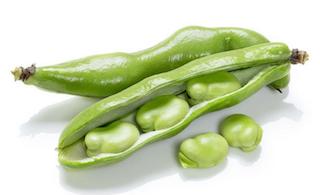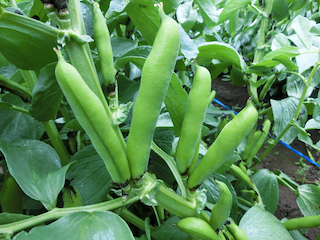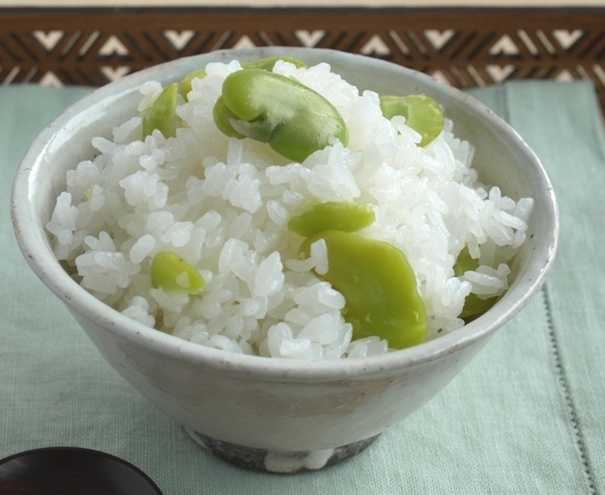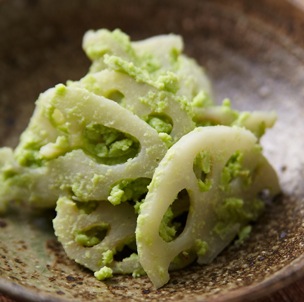SORA MAMÉ
Fava Beans
Fava beans have been part of the eastern Mediterranean diet (Egypt, Greece, Italy) for at least 4000 years. There are stories of monks from India traveling through China bringing favas to Japan in the Nara Period (710-794 AD). However, the first written evidence they were consumed in Japan is mention in a dictionary-like document called Tashikihen 多識篇, dated 1631. Today, favas (what the Japanese call sora mamé) are welcomed to table as spring shifts to early summer.
The Japanese write SORA MAMÉ in several ways: 空 the calligraphy for SKY + 豆 calligraphy for BEAN
Writing sora mamé as “sky bean” evokes the image of stalks in the field with pods pointing to the heavens — indeed sometimes sora mamé is written as ten mamé 天 meaning “bean from heaven.”
Writing sora mamé as COCOON (kaiko) 蚕 + BEAN 豆 relates to the pods themselves, which look vaguely like silkworm cocoons. No matter how you write sora mamé tha plump beans inside their cushy-soft velvet-like pods are waiting to be enjoyed.
Ready to try preparing fava beans in a Japanese manner? Visit my KITCHEN CULTURE page and download recipes for:
そら豆ご飯 sora mamé gohan ひばり和え hibari aé
By the way, HIBARI is a Skylark and dishes made with fava beans often include hibari in their name.
Stay connected.
I’m looking forward to your comments on the items I post to my
Facebook page!
I do hope you like it!
Elizabeth Andoh
A Taste of Culture
Culinary Arts Program
Setagaya-ku, Tokyo 158-0095, Japan





Comments